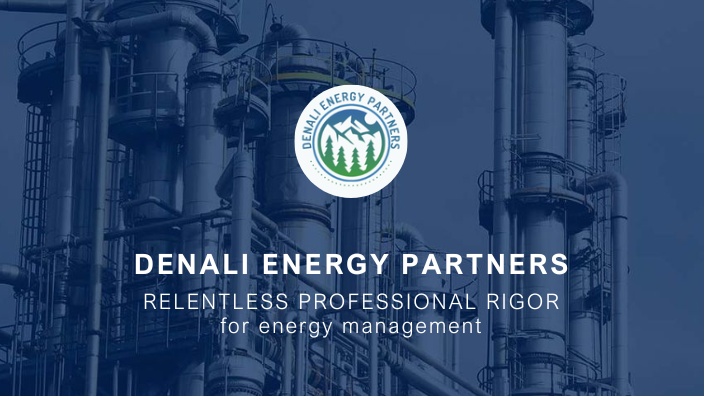How to Innovate and Adapt to New Sustainable Trends for Industrial Parks
Denali-ep
| 21 de octubre de 2024
How to Innovate and Adapt to New Sustainable Trends for Industrial Parks
Introduction
Industrial parks are at the forefront of the transformation towards a more sustainable future. In a world where environmental awareness grows daily, companies operating in these spaces must adapt and innovate to meet new sustainability expectations. This article explores how industrial parks can implement sustainable practices that not only benefit the environment but also enhance operational efficiency and profitability.
The Need for Sustainability in Industrial Parks
Industrial parks are responsible for a significant portion of resource production and consumption, resulting in considerable environmental impact. Adopting sustainable practices is not only a response to increasingly stringent government regulations but also a strategy to attract investments and improve brand image. Companies operating in these parks can benefit from sustainability by reducing costs, increasing efficiency, and satisfying an increasingly environmentally conscious consumer base.
Strategies for Sustainable Innovation
Energy Efficiency
One of the most critical areas for innovation is energy efficiency. Implementing renewable energy technologies, such as solar panels and wind turbines, can significantly reduce the carbon footprint of an industrial park. Additionally, investing in energy storage systems allows for more effective use of these energy sources.
Waste Management
Proper waste management is fundamental for any industrial park aspiring to be sustainable. Implementing recycling and reuse programs can minimize the amount of waste sent to landfills. Materials such as plastic, glass, and metal can be recycled and transformed into new products, generating additional revenue.
Sustainable Mobility
Encouraging the use of electric vehicles and car-sharing systems within industrial parks can reduce emissions and improve air quality. Furthermore, creating infrastructure for bicycles and promoting public transportation are strategies that can also be implemented.
Green Technologies
Incorporating green technologies, such as artificial intelligence and the Internet of Things (IoT), can optimize industrial processes. These technologies enable better monitoring of resource consumption and identification of areas for improvement.
Certifications and Regulations
Obtaining sustainability certifications, such as LEED (Leadership in Energy and Environmental Design), can be a significant draw for companies looking to establish themselves in industrial parks. These certifications not only validate a commitment to sustainability but can also result in tax incentives and increased customer attraction.
Collaboration and Synergy
Industrial parks should foster collaboration among the companies they host. Proximity between different sectors can facilitate knowledge exchange and joint innovation. Creating shared workspaces and innovation labs can be an effective way to promote this synergy.
Implementation of Circular Economies
Adopting a circular economy model is essential for minimizing waste. This involves designing products that are easier to recycle and reuse. Additionally, industrial parks can establish partnerships with companies specializing in material recovery to ensure that products at the end of their life cycle are recycled properly.
Monitoring and Evaluation
The implementation of sustainable practices should be accompanied by a monitoring and evaluation system. This allows industrial parks to measure the impact of their initiatives and adjust their strategies as necessary. Tools such as life cycle assessment can be useful for understanding the environmental impact of industrial processes.

Success Stories
Numerous examples exist of industrial parks that have successfully implemented sustainable practices. For instance, some have achieved a 30% reduction in water and energy consumption through energy efficiency technologies and rainwater harvesting systems. These cases demonstrate that sustainability is not only achievable but can also be profitable.
Conclusions
Innovating and adapting to new sustainable trends is crucial for industrial parks. Implementing strategies focused on energy efficiency, waste management, sustainable mobility, and green technologies not only benefits the environment but also enhances competitiveness and profitability for businesses. As the world moves toward a more sustainable future, industrial parks that adopt these practices will be better positioned to thrive.
What are eco-industrial parks (EIPs)?
Eco-industrial parks are communities of manufacturing and service businesses located together on a common property, aiming to enhance environmental, economic, and social performance through collaboration in managing resource issues. They focus on sustainable practices while promoting cooperation among businesses to minimize environmental impact.
How do industrial parks contribute to sustainability?
Industrial parks improve sustainability by promoting efficient resource use, implementing recycling initiatives, and reducing carbon emissions. They also facilitate cooperation among businesses to achieve shared sustainability goals, which can lead to improved waste management and energy efficiency.
What strategies can be implemented for sustainable practices in industrial parks?
Key strategies include adopting renewable energy sources, improving energy efficiency, implementing effective waste management systems, fostering sustainable mobility options, and using green technologies. These practices not only reduce environmental footprints but also enhance operational efficiency
What certifications are available for sustainable industrial parks?
Certifications such as LEED (Leadership in Energy & Environmental Design), WELL Building Standard, and EDGE (Excellence in Design for Greater Efficiencies) recognize industrial parks that meet specific sustainability criteria. These certifications validate a park's commitment to sustainable practices and can attract businesses seeking eco-friendly environments.
What challenges do industrial parks face in becoming more sustainable?
Challenges include high initial costs for implementing sustainable practices, resistance to change from businesses focused on profitability, and the need for regulatory compliance. However, with a clear strategy and commitment to sustainability, these challenges can be effectively addressed.




